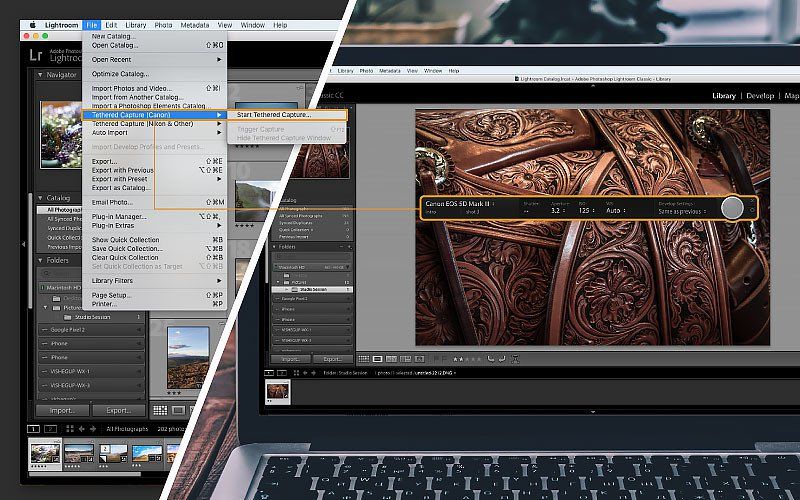
- #Acdsee photo studio 2018 lightroom plugins how to#
- #Acdsee photo studio 2018 lightroom plugins skin#
- #Acdsee photo studio 2018 lightroom plugins software#
Click on the Add a File as a Layer icon and a dialog box opens up asking you to select the location of the image you want to add. I have always gotten around it by using a second monitor and dragging my image in that way.īut if you are working on a laptop or only have one layer, that isn’t an option, so this feature becomes worth knowing about. This is a particularly common function and the way Photoshop does it is really NOT user-friendly. There are lots of other instances when this could be useful – focus stacking, blending panorama or astrophotography images, time-lapse stacking, and so on. I do a couple of specific tasks that require the addition of outside images as extra layers, such as adding texture overlays and compositing.

The one circled here is the “Add a File as a Layer” option. 1 – Add a File as a LayerĪt the bottom of the Layers pane are a whole lot of quick access icons for different layer features. These are things I appreciate, especially when something you do a lot is made easier, or offers a clever alternative. These are either the small things that don’t get used a lot but work really well when you do need to use them, or something that makes it much easier to do a really common task.
#Acdsee photo studio 2018 lightroom plugins how to#
While learning how to use ACDSee Photo Studio Ultimate 2018, there were several things about it that I found particularly useful. Here I have turned the raspberries blue simply by adjusting the Hue sliders in the Vibrance layer. The mask you have just created in the Pixel Targeting window is now applied to your adjustment layer, and it will only apply the adjustment to the light areas of the mask. Save a preset for future use (use the Save option at the top of the screen) and click OK. The top sliders allow you to select the tones and the bottom sliders allow you to select the colors.Īdjust the tone and the color sliders to suit. It creates a mask of the subject that you want to adjust. Right-click on the top layer and select Pixel Targeting and a panel will open up. Here I am using a shot of some bright red raspberries and a Vibrance adjustment layer. In Edit mode, open up your image and select an adjustment layer (any of them seem to be fine). It works in conjunction with an adjustment layer. The Pixel Targeting tool allows you to select specific areas in your image based on a combination of tone and color selection.
#Acdsee photo studio 2018 lightroom plugins skin#
On the HF layer, use the Repair tool to clone clear skin over top of the blemish areas. On the LF layer, use a brush to work on any skin imperfections. The other one will be in color, but will be all blurry and have (LF) in the layer description. It will then create two layers – one will be grey and have (HF) in the layer description.

Select the top layer (the duplicate), then right-click and select Frequency Separation from the drop-down box. Frequency Separation is a destructive edit, so it is recommended that you work on a duplicated layer to maintain image integrity. Open your image in Edit mode and in the Layers pane, duplicate the layer.

I don’t photograph people or close up portraits so have never had the need to use this functionality, but for those who want to access this advanced technique, ACDSee has included it.
#Acdsee photo studio 2018 lightroom plugins software#
Now with a few clicks, the software does all the layers for you, making it easy to apply the effect where necessary. While it can be done manually, it is time-consuming to set up. Frequency separation allows you to smooth out blemishes and imperfections, to even out the skin tones, and provide a polished outcome in the image. This is a function used a lot in portrait and fashion photography – anywhere there is a lot of skin visible, especially faces and close-ups. This can make it obvious that you have used Liquify, so be careful about the backgrounds and surrounding elements in the area you’re using it. It is much easier to do lots of little adjustments as you can undo one if you go too far.Īlso be mindful that when you use Liquify it moves all the pixels within the brush, so if you have any lines or other elements, they can be affected too. Once Liquify mode is active, check that your brush is the correct size and softness (a larger and softer brush is recommended) and very gently click and nudge the area you want to adjust a tiny amount.

On the top menu bar, select Filter > Geometry > Liquify. Liquify is a function in Edit mode, so you need to open your image up in there. Image after Liquify applied to the arch and bowl of the spoon, and the dark side of the main blueberry.


 0 kommentar(er)
0 kommentar(er)
